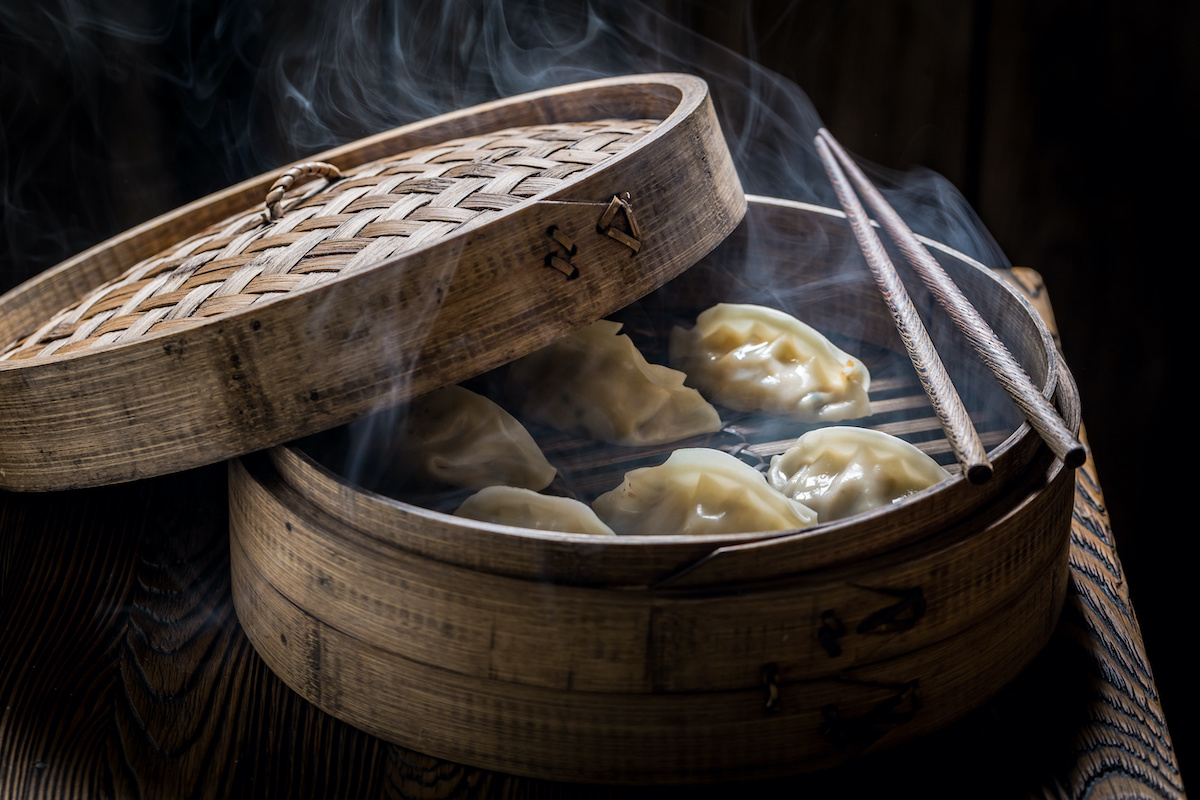

Articles
How To Steam In A Bamboo Steamer
Modified: August 16, 2024
Discover the art of steaming with a bamboo steamer in this comprehensive article. Learn the techniques, benefits, and delicious recipes
(Many of the links in this article redirect to a specific reviewed product. Your purchase of these products through affiliate links helps to generate commission for Storables.com, at no extra cost. Learn more)
How To Steam In A Bamboo Steamer
Steaming food is a popular cooking method that offers a healthier alternative to frying or sautéing. One of the traditional and effective ways to steam food is by using a bamboo steamer. In this article, we will explore the steps and tips to steam food perfectly in a bamboo steamer.
Key Takeaways:
- Steaming in a bamboo steamer offers a healthier, versatile, and authentic cooking experience. It preserves natural flavors, nutrients, and vibrant colors of ingredients, making it a practical and rewarding culinary technique.
- Proper preparation, ingredient selection, and steaming techniques are essential for achieving perfectly steamed dishes. Embrace the art of steaming to create delicious, nutritious meals with a touch of traditional charm.
Read more: Where To Buy A Bamboo Steamer
Choosing a Bamboo Steamer
When selecting a bamboo steamer, there are a few factors to consider. Firstly, consider the size and design of the steamer. Bamboo steamers come in different sizes and often have multiple layers, allowing for simultaneous cooking of different ingredients. Choose a size that suits your needs and the quantity of food you plan to steam.
Secondly, pay attention to the material and construction quality of the steamer. Opt for a steamer made from high-quality bamboo that is sturdy and durable. Inspect the weaving and ensure there are no loose or broken parts that could affect the steaming process.
Preparing the Bamboo Steamer
Before using your bamboo steamer, it is crucial to prepare it properly. Soak the steamer in water for at least 30 minutes to allow the bamboo to absorb moisture. This helps prevent the steamer from burning during the cooking process and ensures even heat distribution.
After soaking, clean the steamer with a soft brush or sponge using mild dish soap. Rinse thoroughly and allow it to air dry completely. This step removes any dust or impurities from the bamboo.
To prevent sticking, line the steamer with suitable materials such as cabbage leaves, banana leaves, or parchment paper. This protective layer not only prevents food from sticking to the bamboo but also adds a subtle aroma to the steamed dish.
Preparing Ingredients for Steaming
When it comes to steaming, using fresh and high-quality ingredients is essential. Choose fresh vegetables, seafood, or meats that are firm and have vibrant colors. Properly clean and wash the ingredients before steaming to remove any dirt or impurities.
Ensure that the ingredients are cut into uniform sizes to ensure even cooking. For vegetables, consider cutting them into bite-sized pieces or julienne strips. For meats or seafood, portion them into pieces that will cook evenly and quickly.
If desired, marinate or season the ingredients before steaming. This will infuse them with flavor and enhance the taste of the final dish. However, remember to avoid excessive seasoning as steaming is a gentle cooking method that allows the natural flavors of the ingredients to shine.
In the next article, we will discuss the remaining steps in detail.
Introduction
A bamboo steamer is a traditional cooking tool that originated in Asia and has been used for centuries. It consists of multiple layers of woven bamboo trays stacked on top of each other, with a lid to trap steam. This simple yet effective design allows for gentle and even cooking, preserving the natural flavors and nutrients of the food.
Steaming is a popular cooking method that has gained recognition for its health benefits and versatility. It involves cooking food by exposing it to steam, either from boiling water or other flavored liquids. Unlike methods like frying or sautéing, steaming requires little to no oil, making it a healthier alternative for those conscious of their dietary intake.
The benefits of steaming extend beyond just health. Steaming helps retain the vibrant colors, textures, and flavors of the ingredients. It also preserves the nutrients, vitamins, and minerals that are often lost during other cooking techniques that involve high temperatures or extended cooking times.
One of the key advantages of using a bamboo steamer is its ability to cook multiple items simultaneously. With multiple layers, you can steam different ingredients on each level, saving time and effort. This makes it ideal for a variety of dishes, from steamed veggies and seafood to dumplings and buns.
Furthermore, bamboo steamers are lightweight, eco-friendly, and easy to use. The natural materials ensure proper airflow during the steaming process, preventing condensation from accumulating and making the food soggy. The lid traps the steam inside, creating a moist cooking environment that results in tender and succulent dishes.
In addition to the practicality and health benefits, the traditional appeal of a bamboo steamer adds a touch of authenticity and charm to your cooking experience. The use of natural bamboo adds a unique aroma to the steamed food, enhancing the overall dining experience.
Whether you’re exploring new culinary techniques or looking for a healthier cooking method, steaming in a bamboo steamer is a versatile and practical option. In the next sections, we will delve into the process of selecting and preparing a bamboo steamer, as well as the steps for successful steaming techniques and tips. So let’s dive in and discover how to steam food perfectly in a bamboo steamer.
Key Takeaways:
- Steaming in a bamboo steamer offers a healthier, versatile, and authentic cooking experience. It preserves natural flavors, nutrients, and vibrant colors of ingredients, making it a practical and rewarding culinary technique.
- Proper preparation, ingredient selection, and steaming techniques are essential for achieving perfectly steamed dishes. Embrace the art of steaming to create delicious, nutritious meals with a touch of traditional charm.
Read more: Where To Buy A Bamboo Steamer
Choosing a Bamboo Steamer
When it comes to selecting a bamboo steamer, there are a few factors to consider to ensure you choose the right one for your needs. Let’s explore these factors in more detail.
Factors to Consider when Selecting a Bamboo Steamer
1. Size: Bamboo steamers come in various sizes, typically ranging from 6 to 12 inches in diameter. Consider the quantity of food you plan to steam and the size of your cooking pots or woks. A larger steamer will allow you to steam more food at once, while a smaller one is more suitable for single servings or smaller portions.
2. Design: Bamboo steamers are designed with either single or multiple tiers. Single-tier steamers are suitable for basic steaming, while multi-tier steamers allow you to cook different ingredients simultaneously. Multi-tier steamers are versatile and save time, making them a popular choice for those who enjoy steaming a variety of dishes.
3. Material and Construction: The quality of the bamboo and construction of the steamer are crucial for its durability and performance. Look for steamers made from high-quality and tightly woven bamboo that can withstand high temperatures without warping or breaking. A well-constructed steamer should have tightly fitted trays that sit securely on top of each other.
Sizes and Designs Available
Bamboo steamers come in various sizes and designs to suit different needs and preferences. Small steamers, around 6 inches in diameter, are ideal for single servings or small portions of vegetables, dumplings, or small seafood items. Medium-sized steamers, ranging from 8 to 10 inches, are more versatile and can accommodate larger quantities of food. Large steamers, around 12 inches, are suitable for steaming large portions or multiple dishes at once.
In terms of designs, traditional bamboo steamers typically feature a dome-shaped lid and round trays. However, you can also find square or rectangular steamers that offer a unique aesthetic appeal. Some steamers come with removable trays, allowing for easy cleaning and storage.
Material and Construction Quality
Choosing a bamboo steamer made from high-quality bamboo is essential for its longevity and performance. Look for steamers made from sturdy, tightly woven bamboo strips. Avoid steamers that have loose or splintered parts, as they can affect the steaming process and pose a safety risk.
Inspect the construction of the steamer, ensuring that the trays fit securely on top of each other without any gaps. The trays should sit snugly, allowing steam to circulate evenly without escaping. A well-constructed bamboo steamer will provide consistent and efficient steaming results.
By considering these factors – size, design, and material construction – you’ll be able to choose a bamboo steamer that suits your cooking needs and delivers excellent results. In the next section, we will discuss how to properly prepare your bamboo steamer before using it for steaming.
Preparing the Bamboo Steamer
To ensure optimal results and to prolong the life of your bamboo steamer, it is essential to properly prepare it before use. Let’s explore the steps in preparing your bamboo steamer.
Soaking the Bamboo Steamer for Optimal Results
Before using your bamboo steamer for the first time, it is crucial to soak it in water. Soaking helps prevent the bamboo from drying out and splitting during the steaming process. It also allows the bamboo to absorb moisture, which in turn helps create a more consistent and even cooking environment.
To soak the bamboo steamer, submerge it in a sink or large container filled with cold water. Ensure the steamer is fully immersed, including the lid and trays. Let it soak for at least 30 minutes or up to an hour. This soaking process allows the bamboo fibers to become more flexible and ensures that the steamer will withstand the high heat without cracking.
Cleaning and Maintaining the Steamer
Before each use, it is important to ensure that your bamboo steamer is clean. After soaking, gently scrub the steamer using a soft brush or sponge and mild dish soap. Pay attention to the corners and crevices, as food particles can get stuck there. Rinse the steamer thoroughly to remove any soap residue.
After cleaning, allow the steamer to air dry completely before storing it. Never put a wet steamer away as moisture can cause mold or deterioration. Store the steamer in a dry and well-ventilated area to prevent any moisture buildup.
Choosing the Right Lining Material
To prevent food from sticking to the bamboo steamer and to infuse additional flavors, it is common to line the steamer trays with suitable materials. Some popular choices for lining include cabbage leaves, banana leaves, or parchment paper.
Cabbage leaves are commonly used because they are easily accessible and impart a subtle flavor to the food. Simply place a few washed and blanched cabbage leaves on each tray, ensuring they cover the entire surface. The cabbage leaves will create a protective barrier between the bamboo and the food, preventing any sticking.
If you prefer a different aroma or flavor, you can also use banana leaves. These can be found in many Asian grocery stores. Cut the banana leaves into the appropriate-sized shapes and place them on the trays before adding the food.
Another option is parchment paper, which is widely available and easy to use. Cut the parchment paper into circles or squares to fit the trays. The paper will provide a non-stick surface for the food and can be discarded after use.
By soaking your bamboo steamer, cleaning it properly, and choosing the right lining material, you’ll ensure that your steamer is ready for successful steaming. In the next section, we will discuss how to prepare the ingredients for steaming and the best practices for achieving delicious results.
Preparing Ingredients for Steaming
To achieve the best results when steaming in a bamboo steamer, it is important to prepare your ingredients properly. Here are some steps to follow when preparing ingredients for steaming.
Selecting Fresh and High-Quality Ingredients
Selecting fresh and high-quality ingredients is crucial for achieving delicious steamed dishes. Choose vegetables that are crisp, vibrant, and free from any signs of wilting or browning. Fresh seafood should have a briny scent and firm flesh. When it comes to meat, opt for cuts that are fresh and free from any discoloration or strong odors.
By using fresh ingredients, you’ll ensure that the flavors are at their peak and that the steaming process will enhance their natural qualities.
Properly Cleaning and Cutting the Ingredients
Before steaming, it’s important to properly clean and prepare the ingredients. Rinse vegetables thoroughly under cold water to remove any dirt or residue. For seafood and meat, pat them dry with a clean paper towel to remove excess moisture.
Pay attention to how you cut the ingredients as well. For vegetables, consider cutting them into uniform pieces to ensure even cooking. Julienne strips or small cubes work well for many vegetable varieties. Seafood and meats should be portioned into pieces that are similar in size. This ensures that they cook at the same rate and are evenly steamed.
Marinating or Seasoning if Desired
While steaming is a gentle cooking method that allows the natural flavors of the ingredients to shine, you can still add additional flavor by marinating or seasoning the ingredients before steaming.
Marinating allows the flavors to penetrate the ingredient and adds an extra layer of taste. Choose marinades or sauces that complement the ingredient you’re steaming. For example, a simple soy sauce marinade works well for seafood, while a ginger soy marinade works wonders for chicken.
If you prefer a lighter touch, consider seasoning the ingredients with simple seasonings like salt, pepper, herbs, or spices. Sprinkle them lightly over the ingredients just before steaming to add a subtle depth of flavor.
However, it’s important not to go overboard with the seasoning or marinating process. Steaming is a delicate cooking method, and overpowering flavors can overpower the natural taste of the ingredients.
By selecting fresh and high-quality ingredients, properly cleaning and cutting them, and marinating or seasoning if desired, you’ll set the stage for delicious and flavorful steamed dishes. In the next section, we will discuss how to set up your bamboo steamer and begin the steaming process.
Read more: How To Steam Eggs In A Steamer
Setting up the Steamer
After preparing the ingredients, it’s time to set up your bamboo steamer for cooking. Here are the steps to follow to ensure a successful steaming process.
Assembling the Bamboo Steamer
To assemble the bamboo steamer, start by placing the largest tray at the bottom. If your steamer has multiple tiers, stack the subsequent trays on top, ensuring that they fit securely into one another. Finally, place the lid on the top tier, making sure it fits snugly.
Make sure that the trays are properly aligned, with no gaps or overlap. This will allow the steam to circulate evenly throughout the steamer, ensuring even cooking of the ingredients.
Adding Water to the Steaming Vessel
For steaming to occur, you’ll need to add water to the steaming vessel. The vessel can be a pot, wok, or any large cooking vessel that can comfortably accommodate the size of the bamboo steamer.
Fill the steaming vessel with enough water to create steam but not so much that it touches the bottom of the bamboo steamer. The water level should be below the first tier of the steamer so that the food is not submerged in water during the steaming process.
Positioning the Steamer in the Cooking Setup
Place the steaming vessel on the stove or heating element, ensuring that the size of the vessel matches the size of the burner. The heat should evenly distribute across the bottom of the steamer to ensure even steaming.
It’s important to remember that the bamboo steamer should never directly touch the water. Instead, the steam generated from the water beneath the bamboo steamer will rise and cook the food.
If you’re using a gas stove, make sure the flame is not reaching the sides of the steamer. Direct heat from the flame can cause damage to the bamboo material or even pose a fire hazard. Adjust the flame to a size that aligns with the diameter of the steamer.
For electric stoves, choose a burner that matches the diameter of the steamer for best results. If the burner is larger than the steamer, it may create uneven steaming or cause the food to cook too quickly.
By properly assembling the bamboo steamer, adding the right amount of water to the steaming vessel, and positioning the steamer in the cooking setup, you’re now ready to start the steaming process. In the next section, we will explore steaming techniques and tips to ensure perfectly cooked and flavorful dishes.
Read also: 9 Amazing Bamboo Steamer for 2025
Steaming Techniques
To achieve optimal steaming results with your bamboo steamer, it’s important to understand and implement proper steaming techniques. Let’s dive into some key techniques that will help you steam your ingredients to perfection.
Steaming Times and Temperatures for Different Ingredients
Each ingredient has its own steaming time and temperature requirements to ensure it is cooked perfectly. Here are some general guidelines:
– Vegetables: Most vegetables require a steaming time of 5 to 10 minutes, depending on their size and density. Leafy greens like spinach or bok choy will steam faster than root vegetables like carrots or potatoes. Aim for a steaming temperature of around 200°F (93°C) for vegetables.
– Seafood: Seafood can vary in steaming time depending on its size and thickness. Shrimp and small fish fillets may steam in just a few minutes, while larger fish fillets or shellfish like mussels or clams may take up to 10 minutes or more. The internal temperature of cooked seafood should reach 145°F (63°C).
– Meats: Steaming meats requires longer cooking times to ensure they are thoroughly cooked. Chicken and pork should reach an internal temperature of 165°F (74°C), which can take anywhere from 20 to 30 minutes, depending on the cut and thickness. Beef or lamb cuts may require 30 to 45 minutes of steaming.
– Dumplings and Buns: Depending on the filling, dumplings and buns typically require around 10 to 15 minutes of steaming. Poultry or pork fillings should reach an internal temperature of 165°F (74°C).
Always use a food thermometer to ensure that the ingredients reach the proper internal temperature for safety.
Layering Multiple Levels in the Steamer
If your bamboo steamer has multiple tiers, take advantage of them to steam different ingredients simultaneously. Make sure to place ingredients that require longer cooking times in the lower tiers, as they will be closer to the steam source and will receive more heat. Delicate or quick-cooking ingredients should be placed in the upper tiers.
Remember to leave enough space between the ingredients for the steam to circulate. Overcrowding the steamer may result in uneven cooking or slower cooking times.
Using a Lid or Covering the Steamer
When steaming, it is crucial to keep the steam trapped inside the bamboo steamer to create the ideal cooking environment. Use the provided lid or cover the steamer with a clean kitchen towel or aluminum foil. The lid or cover should fit securely to prevent steam from escaping.
Avoid lifting the lid or removing the cover during the steaming process, as this will cause heat to escape and disrupt the cooking time. Only open the steamer when you believe the ingredients are cooked, and use caution when removing the lid, as the steam can be extremely hot.
By following these steaming techniques, you’ll be able to cook a variety of ingredients to perfection in your bamboo steamer. In the next section, we will share some helpful tips to ensure a successful steaming experience.
Read more: How To Steam A Shirt With A Steamer
Tips for Successful Steaming
To ensure successful steaming results with your bamboo steamer, here are some essential tips to keep in mind:
Checking Water Levels During the Steaming Process
Throughout the steaming process, it’s important to keep an eye on the water levels in the steaming vessel. If the water evaporates completely, it can lead to overheating and potentially damage the bamboo steamer. Before starting the steaming process, ensure that there is enough water in the vessel.
Check the water levels periodically during steaming, especially for longer cooking times. If the water level is low, carefully add more hot water to the vessel, taking care not to spill water on the steaming food or inside the bamboo steamer. This will help maintain the right amount of steam and prevent the vessel from running dry.
Avoiding Overcrowding in the Steamer
While it can be tempting to fill the bamboo steamer to its maximum capacity, it’s important to avoid overcrowding the steamer. Overcrowding can hinder the circulation of steam and may result in uneven cooking. Each ingredient needs space to receive adequate heat and steam.
Leave enough room between the ingredients so that steam can circulate freely. If you have a lot of food to steam, consider steaming in multiple batches or using multiple bamboo steamers if available. This will ensure that each ingredient cooks evenly and retains its texture and flavor.
Maintaining a Steady Heat Source
To achieve consistent steaming results, it’s important to maintain a steady heat source throughout the cooking process. Keep the heat at a medium or medium-high level to ensure that the water underneath the steamer is constantly producing steam.
Avoid fluctuating the heat by adjusting it too frequently. A steady and continuous heat source will maintain the ideal steaming environment and allow the ingredients to cook evenly.
If using a gas stove, be mindful of the flame size. Ensure that the flame is not reaching the sides of the bamboo steamer directly, as it can cause damage to the bamboo material. Adjust the flame to a size that matches the diameter of the steamer.
For electric stoves, select a burner size that matches the diameter of the steamer for optimal heat distribution.
By following these tips for successful steaming, you’ll ensure that your bamboo steamer delivers perfectly cooked and flavorful dishes. In the next section, we will discuss how to test for doneness and provide some serving and storage tips for steamed food.
Read more: How To Steam Carpet With Steamer
Testing for Doneness
In order to determine if your steamed food is properly cooked, it’s important to test for doneness using different indicators. Here are some methods to help you determine when your food is perfectly steamed:
Indicators to Determine if the Food is Properly Cooked
1. Texture: One of the best ways to determine if food is properly steamed is by checking its texture. Most ingredients, such as vegetables and meats, should be tender yet retain some firmness. Vegetables should be cooked until they are brightly colored and easily pierced with a fork. Meats, such as chicken or fish, should be opaque and should easily flake apart.
2. Color: Steaming helps retain the vibrant colors of ingredients. Check if vegetables have become bright and vibrant in color. For meats, ensure they have cooked to the desired color, such as fully cooked poultry turning white and no traces of pink.
3. Aroma: Steamed food should have a pleasant aroma. If the ingredients have a cooked or fragrant smell, chances are they are properly steamed.
Using a Thermometer or Knife Test
For certain ingredients, it can be helpful to use a cooking thermometer or conduct a knife test to check for doneness.
1. Thermometer Test: For meats and poultry, use a food thermometer to ensure the internal temperature has reached a safe and appropriate level. Different types of meat have different recommended internal temperatures. For instance, chicken should reach 165°F (74°C), while steak can be cooked to various degrees of doneness based on personal preference.
2. Knife Test: For vegetables, a knife or fork can be used to test doneness. Insert a knife or fork into the vegetable to see if it easily pierces through. If it meets little resistance, the vegetable is likely cooked to the desired tenderness.
Proper Resting or Cooling Time after Steaming
After steaming, it is important to allow the food to rest or cool for a few minutes before serving. This helps the flavors to settle and the textures to set. It also allows for any residual cooking to take place, ensuring that the food is evenly cooked throughout.
During the resting or cooling time, cover the steamer with a clean kitchen towel or foil to retain the heat and prevent the food from drying out.
By using these methods to test for doneness, you can ensure that your steamed food is cooked to perfection and ready to be enjoyed. In the final section, we will discuss serving and enjoying steamed food, as well as provide tips for storing and reheating leftover steamed dishes.
Read more: How Do You Use A Bamboo Steamer
Serving and Enjoying Steamed Food
After the steaming process, it’s time to serve and enjoy your perfectly steamed dishes. Here are some tips to elevate your steamed food experience:
Plating and Garnishing Options
When plating your steamed food, consider using simple yet elegant presentations that allow the natural colors and textures of the ingredients to shine. Arrange the steamed vegetables or proteins attractively on a plate or in a serving dish.
For an added visual appeal, garnish your steamed dishes with fresh herbs, such as a sprinkle of chopped cilantro, basil, or parsley. You can also add a squeeze of citrus juice, a drizzle of sesame oil, or a sprinkle of toasted sesame seeds to enhance the flavors and add a finishing touch.
Pairing Steamed Dishes with Complementary Flavors
Steamed dishes can be enjoyed on their own, but they can also be paired with various sauces or condiments to enhance the flavors. Here are some popular pairings:
– Soy sauce: A classic dipping sauce for many steamed dishes, soy sauce adds saltiness and umami to the food. Use low-sodium soy sauce for a healthier option.
– Ginger-scallion sauce: This aromatic sauce made with grated ginger, chopped scallions, oil, and soy sauce pairs well with steamed seafood, dumplings, or poultry.
– Chili oil: Spicy chili oil can add a kick to steamed dishes, particularly for those who enjoy some heat.
– Oyster sauce: A rich and savory sauce, oyster sauce complements steamed vegetables and certain meat dishes.
Experiment with different sauces and flavors to find combinations that complement your steamed dishes and suit your personal taste preferences.
Storing and Reheating Leftover Steamed Food
If you have leftover steamed food, it’s important to store it properly to maintain its quality and prevent foodborne illnesses. Follow these guidelines for storing and reheating:
– Allow the steamed food to cool to room temperature before storing.
– Transfer the leftovers to airtight containers and refrigerate within two hours of cooking.
– Label the containers with the date to keep track of freshness.
– Leftover steamed food should be consumed within two to three days for optimal quality.
– To reheat, place the steamed food in a steamer or microwave with a bit of water to prevent drying. Be careful not to overheat, as it may cause the food to become rubbery or lose its texture.
Note that some steamed dishes may not reheat as well as others, particularly delicate seafood or vegetables. It’s best to consume these dishes fresh, when possible.
By employing these serving and storage tips, you can fully appreciate the flavors and textures of your steamed dishes and maximize their enjoyment.
Conclusion
In conclusion, steaming in a bamboo steamer is an excellent cooking method that offers a range of benefits and versatility. Throughout this article, we have explored the various aspects of steaming in a bamboo steamer, from choosing the right equipment to preparing the ingredients, mastering steaming techniques, and serving the final dishes.
The benefits of steaming are numerous. Steaming allows for gentle and even cooking, preserving the natural flavors, textures, and nutrients of the ingredients. It is a healthier alternative to other cooking methods that require oil or high heat. Steaming also retains the vibrant colors of the food, creates a moist and tender result, and requires minimal effort in cleanup.
The versatility of steaming in a bamboo steamer is another advantage. With multiple layers, you can steam different ingredients simultaneously, allowing for efficient and time-saving cooking. From vegetables to seafood, meats, and even dumplings, a bamboo steamer provides endless possibilities in the kitchen.
Steaming in a bamboo steamer is not only practical but also adds an authentic and traditional touch to your cooking experience. The natural materials and unique aroma of bamboo contribute to the overall enjoyment of your culinary creations.
So, whether you’re a seasoned cook or a beginner in the kitchen, I encourage you to try steaming in a bamboo steamer at home. Not only will you experience the health benefits and flavorful results, but you will also discover a new and rewarding way to prepare your favorite ingredients.
Remember to follow the proper techniques for soaking and maintaining your bamboo steamer, as well as selecting fresh ingredients, properly cleaning and cutting them, and experimenting with flavors and garnishes. With practice, you will master the art of steaming and create delicious and nutritious meals for yourself, friends, and family.
So, why not give it a try? Embrace the art of steaming and unlock a world of culinary possibilities with a simple bamboo steamer in your kitchen. Happy steaming!
Now that you've mastered steaming with a bamboo steamer, why not upgrade your kitchen arsenal further? Our next feature highlights essential kitchen tools that are not only innovative but also dishwasher safe, making cleanup a breeze. If you're eager to simplify cooking and maintenance, delve into our review of must-have gadgets from Kitchen Eight Five, especially designed for 2024. These tools promise to make every culinary venture smoother and more enjoyable, ensuring you spend less time cleaning and more time savoring delicious meals.
Frequently Asked Questions about How To Steam In A Bamboo Steamer
Was this page helpful?
At Storables.com, we guarantee accurate and reliable information. Our content, validated by Expert Board Contributors, is crafted following stringent Editorial Policies. We're committed to providing you with well-researched, expert-backed insights for all your informational needs.
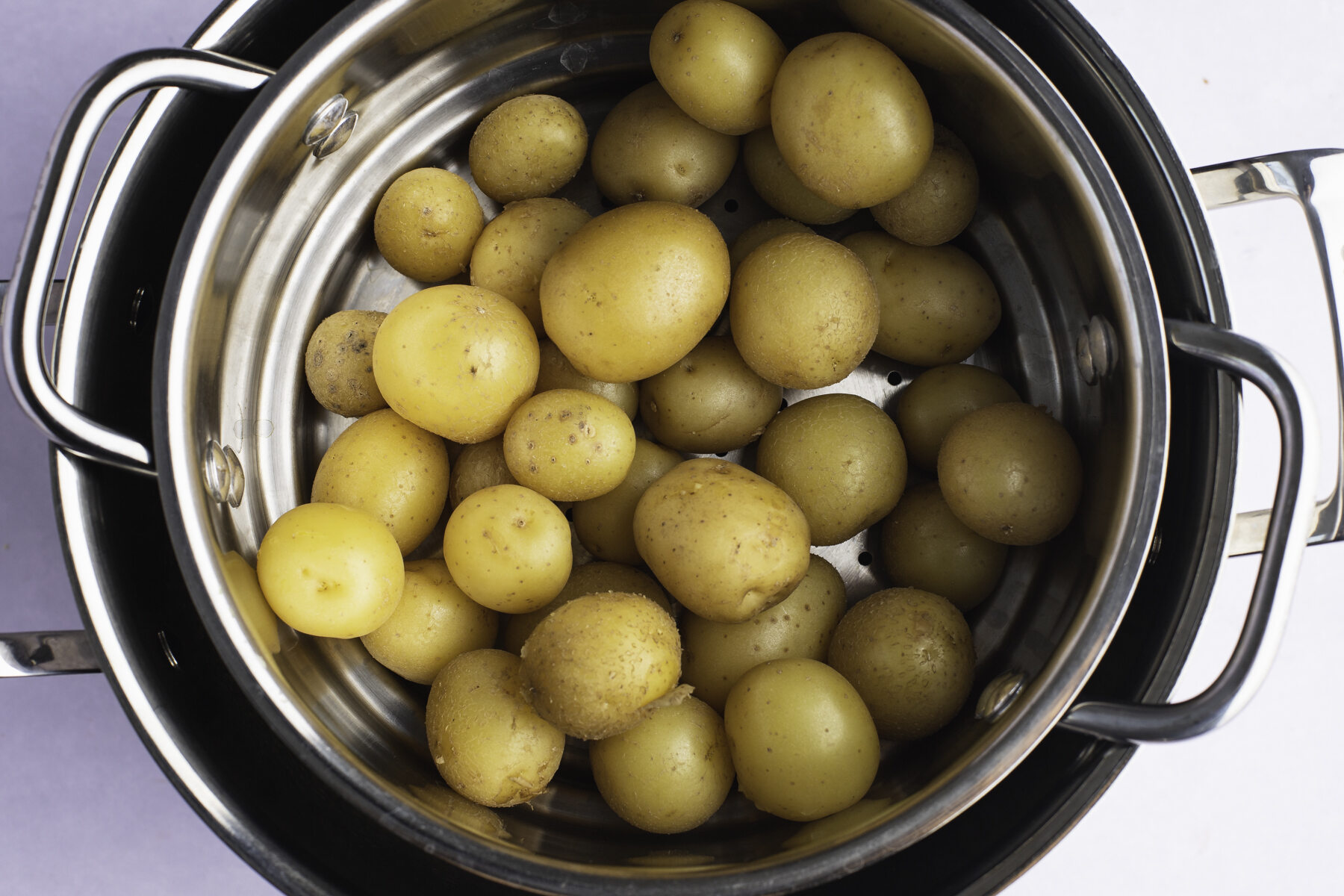
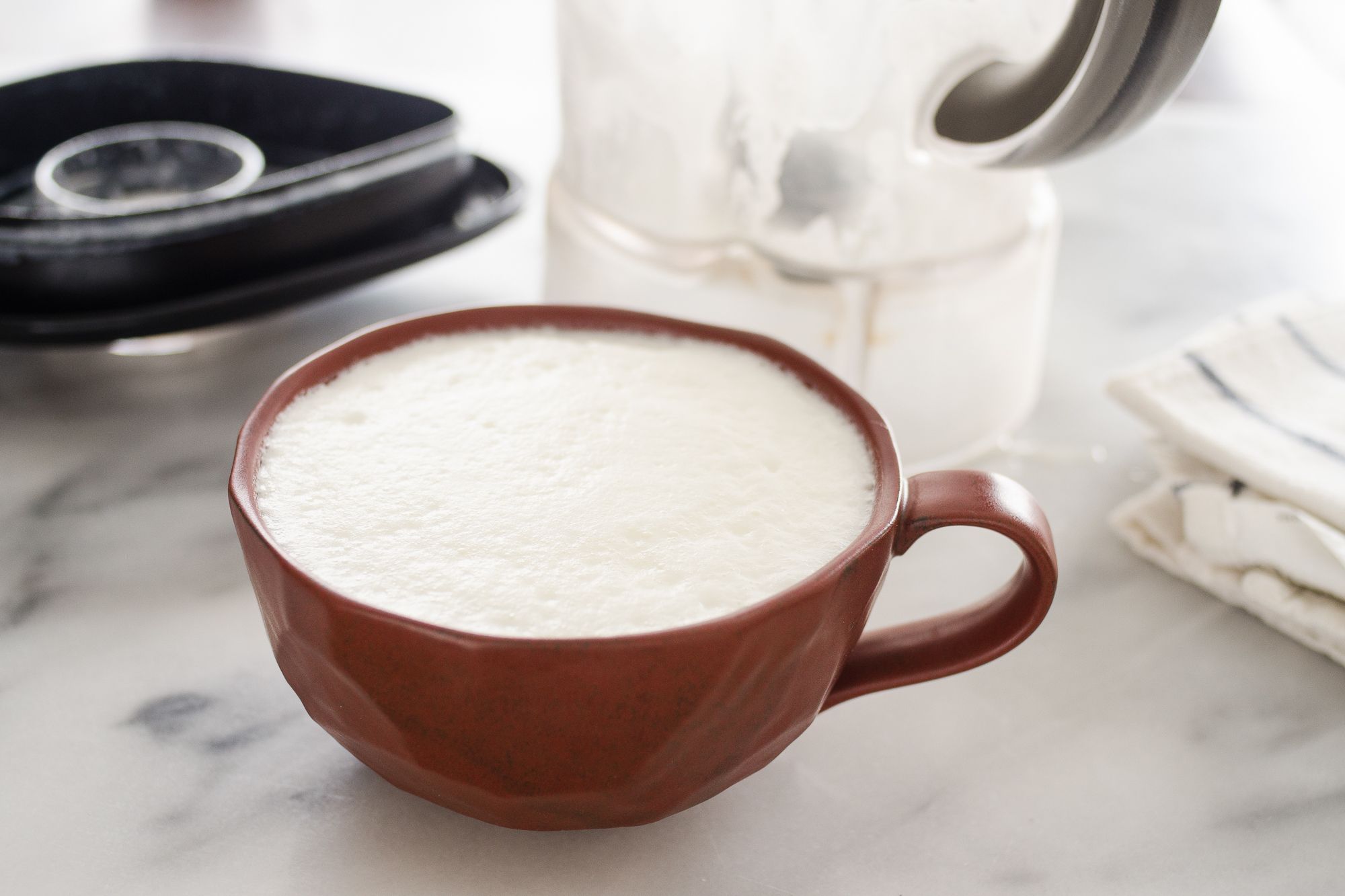
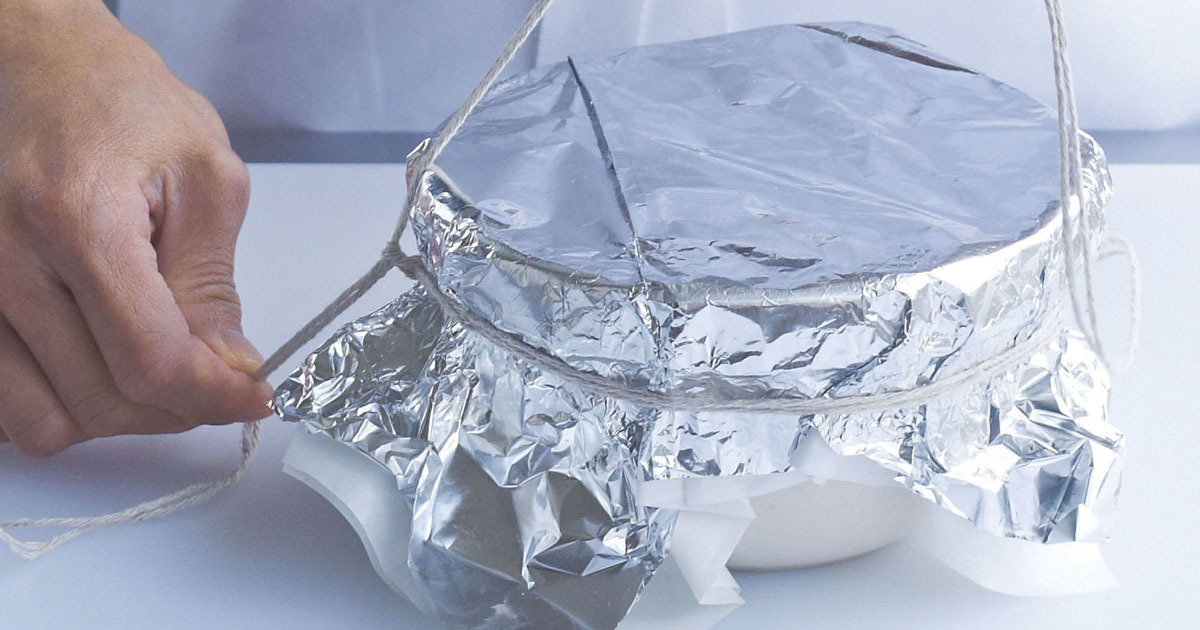
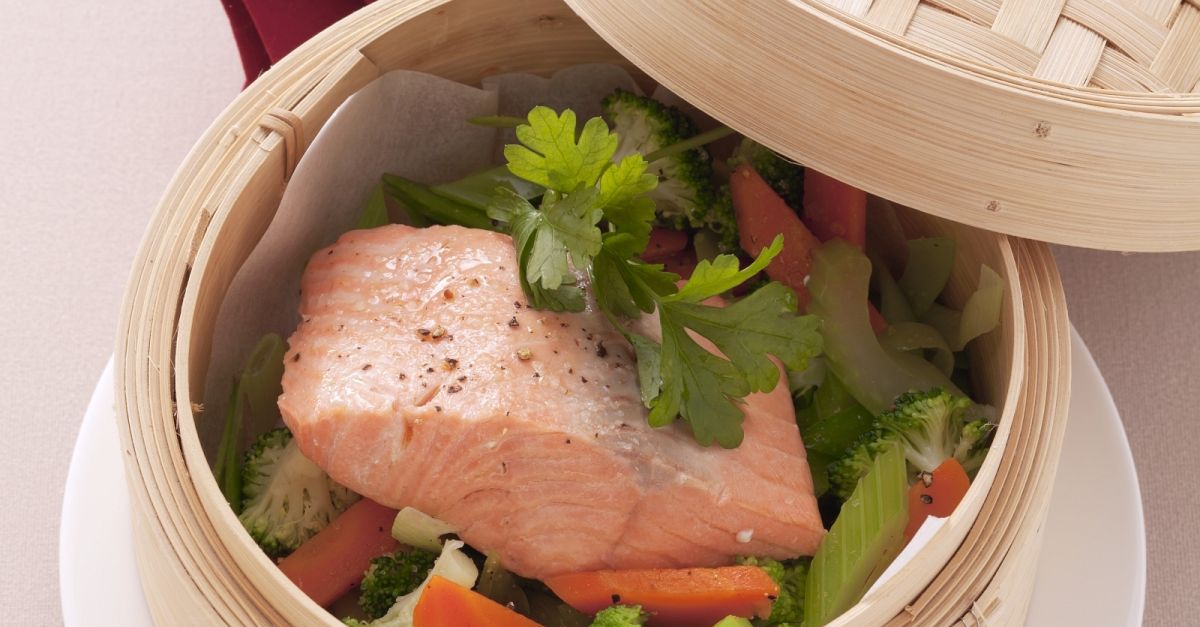
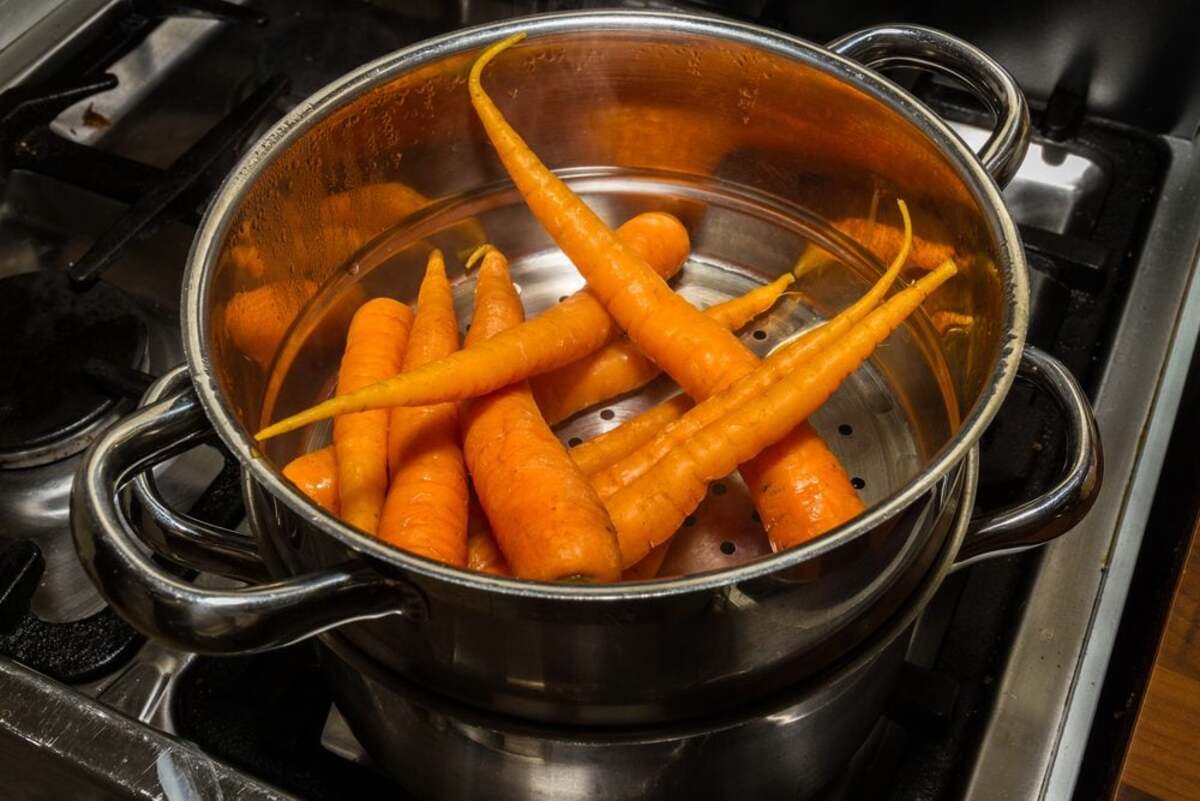
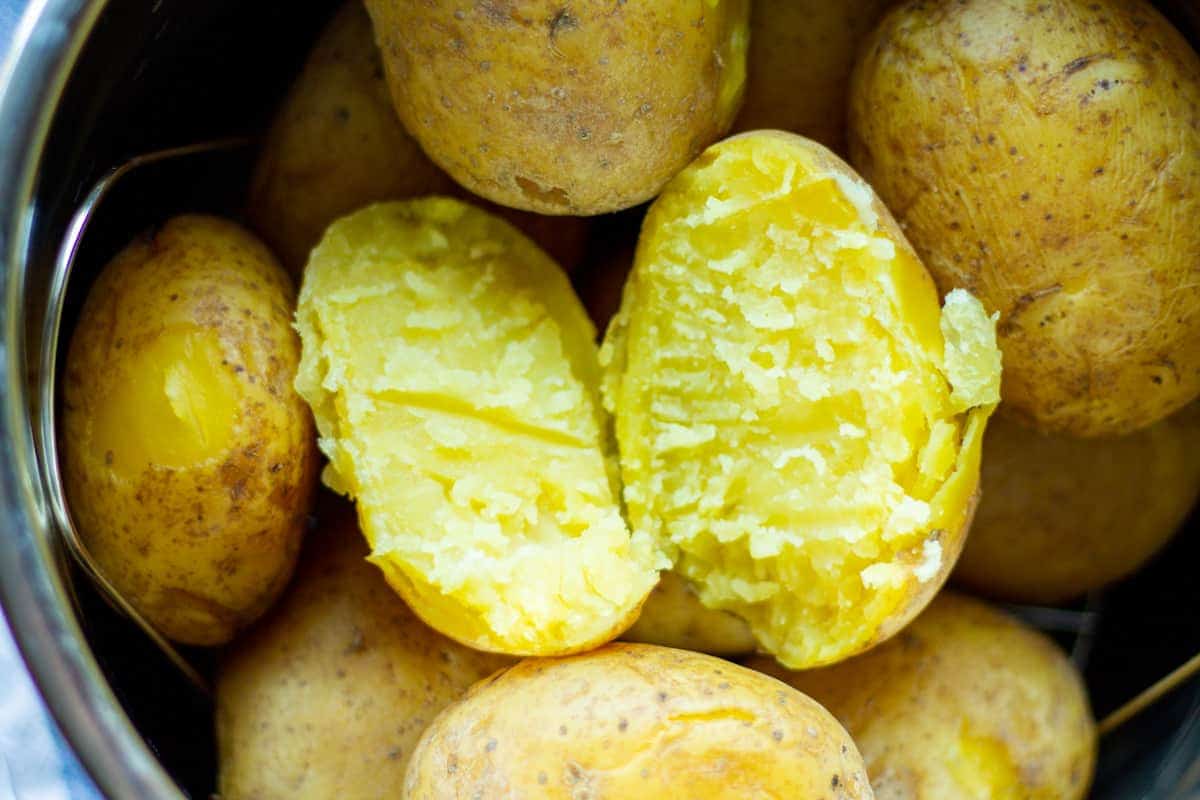

0 thoughts on “How To Steam In A Bamboo Steamer”